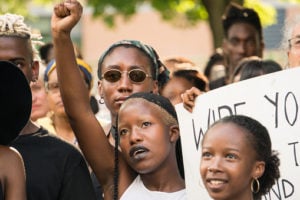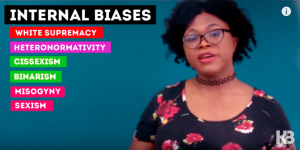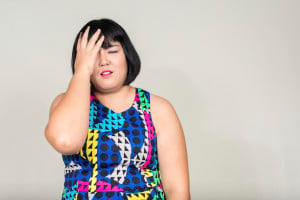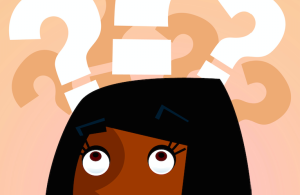
Source: World Bank
Originally published on stillmyrevolution and republished here with their permission.
I am going to spend a lot of this post critiquing the idea of bodily self-determination, but this is not to say that I don’t think it is incredibly important. I do. I think this is the case both in a theoretical way and in a very grounded way.
As a trans person who takes hormones and has had surgery, my ability to direct what happens to my body is essential.
As a survivor of sexual assault, I think it is absolutely vital that people’s bodily autonomy and consent always be respected.
As a disabled person who has had care collectives help me meet my basic needs, it has been crucial that I be able to direct my care while maintaining my own autonomy.
But I am also White and a settler living on unceded land.
My first site of concern with respect to self-determination being embraced as a political ideal is that self-determination is being co-opted from Indigenous struggles.
I am using the term Indigenous in an anti-colonial context and want to be clear that I am not saying that all Indigenous people or cultures are the same.
Colonialism works – according to Kirmayer, Simpson, and Car – to construct a “pan-Indian cultural identity rooted in a timeless mythic past.”
In speaking about Indigenous people and struggles here, I do so with the understanding that there is profound diversity within and between Indigenous communities and nations.
Consistently, however, within the context of Indigenous struggle, self-determination is a national determination – a collective determination not an individualistic one.
In many Indigenous world views, the individual is not a rugged self-made individual, but emerges in and through community.
Indeed, the notion of an independent individual self is a European concept that is being imposed around the world as part of a colonial-imperialist project.
When people like me – white settlers – take up the language of self-determination, it tends to be applied to a very different understanding of the self.
Here, self-determination can be used to support neo-liberal notions of individualism and self-reliance.
So, I am concerned with the co-optation of this radical idea in Indigenous communities and it being used in ways that work to undermine these movements and reinforce colonialism and capitalism.
When folks approach self-determination from a Western perspective, we define it as individualistic self management. Here, it is synonymous with independence and self-reliance.
So, here we see the severance of community from self-determination. (Alternatively, it is defined as state determination, which is also a very different concept from Indigenous national self-determination).
However, interdependence is something that we really all do rely on to survive.
Did you grow all of the food you ate today? Did you sew all the clothes you are wearing? One of the brilliant tricks of capitalism is that it erases interdependence and perpetuates this myth that we all need to be self-supporting individuals.
It asserts that the systemic oppression that people face, particularly their poverty, are the consequences of their own individual failings.
Disabled people are depicted as being burdens, as being needy, when non-disabled people’s neediness is normalized and thus erased.
The root of disabled people’s oppression is depicted as rooted in the individual – often at a genetic level – and the social causes of our oppression are erased.
Independent Living
Instead of unpacking this really problematic understanding of self-determination, many non-Indigenous disabled people identify it as the goal.
One of the best examples of how liberal notions of self-determination get taken up in disability discourse is with respect to the independent living movement and attendant care.
Independent living has led to some incredibly important changes in the lives of many disabled people, and I want to be clear that I am not devaluing its significance or impact. However, it has also constructed this notion of independence through capitalist consumption.
Independent living focuses the notion of independence around self-determination rather than physical acts.
This line of argument actively pits physically disabled people against people labelled with intellectual or psychiatric disabilities.
Physically disabled activists assert that independence, which in a capitalist society is tantamount to their humanity, is located in the capacity to direct.
Those who cannot direct – cannot assert self-determination in this way (so we are talking about large groups of people considered to not have “capacity”) – are not independent, not self-determining, not as human.
Here, self-determination is being used as a way to actively marginalize people and legitimize their domination in order for certain people to access privilege.
This is what Dan Irving calls “scarcity of liberation” – the notion that we must fight amongst one another for legitimacy and liberation rather than recognize it as necessarily a collective project.
Also, attendant care is restricted to those who can afford it or the small number of people who are lucky enough to receive direct funding (or, in very rare circumstances, those who are able to mobilize community resources through care collectives).
In Ontario, in order to get direct funding, someone else has to leave the program – this essentially means that someone has to die for you to get the care you need. Once applying, it takes 3-5 years just to get an interview to qualify for direct funding.
This means that poor people who need attendant care frequently have to choose between being confined to an institution or going without their basic needs being met. This is appalling. Everyone should have the care that they need. (See Kelly, or of particular interest to me: Erickson, L. (2008). Hot & bothered. Shameless. (Winter/Spring), 21-23; Erickson, L. (2007). Revealing Femmegimp: A sex-positive reflection on sites of shame as sites of resistance for people with disabilities. Atlantis, 32(2), 42-52.)
At the same time, however, it is important to recognize that those people who are getting their attendant care needs met are doing so on the backs of primarily immigrant women of color who are often overworked and underpaid without job security.
These workers are often referred to, within many circles, as one’s “arms and legs.”9
Here, certain disabled people are able to obtain ‘self-determination’ but only through the continued domination of others.
For many disabled people, part of living independently means access to assisted sex – attendants that help people have the kind of sex they want to have.
This is a fundamental care need for many folks and a need that should be met. But when attendants are simply defined as “arms and legs” and particularly when race, class, gender and sexual hierarchies are ignored self-determination clashes with consent.
This discourse of self-determination is simply too simplistic and limiting to engage with the complex issues of consent, negotiation and mutual aid.
As an aside, the way that assisted sex intersects with sexuality means that in Canada, assisted sex is legal (although some would argue otherwise) but assisted anal sex is clearly illegal.
Here, Canada’s regressive anti-sodomy laws that make it illegal to have anal sex in public – public is defined as more than two people.
This puts men who have sex with men, queers, and people who get caught up in labels of sexual deviancy at risk. This is just one small example why we cannot approach oppression through single-issue lenses.
Historically, disabled people have often been caught in the net of anti-queer/anti-sodomy legislation. This is not coincidence.
Indeed, disabled people are frequently denied self-determination around sexuality – either through the systematic desexualisation of (primarily physically) disabled people or its inverse – the depiction of (primarily, people labelled as intellectually or psychiatrically) disabled people – as over-sexed, out of control, dangerous, even perpetrators.
From time to time, I think in misguided response to the theft of disabled people’s sexualities, some theorists claim that to be disabled is to be inherently queer.
Lately, people have been circulating information about the LGBTQC community – the C is for crip (slang for disabled – usually implying physically disabled).
This too, however, is a denial of the actual sexualities of disabled people.
This puts many disabled people into a double bind in which queerness is imposed on us while, at the same time, widespread disablism excludes many disabled people from queer communities or being considered legitimately queer.
Absent from this call and response game is the reality that disabled people are sexually diverse.
Disabled people are jockeyed in a competition for privilege and resources in which we are consistently established as the other – as apart from.
Instead of operating from a “scarcity of liberation” mentality, we need to work, following Harsha Wallia’s call, to shift to a mentality of abundance.
Working from a heart-set of solidarity and recognition that all oppressions are interlocked, it is also essential that we ask who actually gets access to self-determination and at whose expense?
As a trans person who has had surgery, I have exercised my right to self-determination but the only way that I could do that – as a disabled person who has never hit the poverty line is because I work in a unionized workplace with a really radical union and I do that because I go to school.
So, my whiteness and educational privilege were engaged in order for me to have surgery.
If, like so many trans people, I didn’t have the money and couldn’t access the public system, if I didn’t have people to support me recover, if I didn’t have the ability to take time off work, if I didn’t have stable housing – and I could go on and on – I couldn’t have exercised self-determination.
Time and time again, when individual autonomy or choice gets employed, it is the people with the most privilege who are able to benefit from it.
Let’s look at feminism and the pro-choice movement as an example.
Feminism and the Pro-Choice Movement
Riding the Waves
As a bit of background, (white) feminism in the Global North is thought about in three waves.
First wave feminism, which began in the late 19th century and encompassed the women’s suffrage movement, came out of new discourses emerging around gender as well as sexuality and race.
This began, according to Lennard J. Davis as a result of the emergence of eugenics. Eugenics is the belief in the selective reproduction of “desirable” people and began in the mid- nineteenth century.
Queers, working class people, people of color, women, and the people that we still think of as disabled today were cast as feebleminded – as disabled.
As middle-class white women were defined as disabled, privileged women chose to establish themselves as something other than disabled in order to build a successful rights movement in the era of eugenics.
The early feminist movement not only established (certain) women as nondisabled, it also worked to reinforce oppression on the groups that they left behind: racialized, disabled, queer, and working class people.
Second wave feminism, which began in the 1960s, while no longer publicly advocating for eugenics, built much of its movement on the principles of equality and choice, primarily the choice to have an abortion.
Reproductive Justice
When the “pro-choice” movement emerged, it was (and too often still is) largely by and for middle-class, non-disabled white women.
At the same time that the pro-choice movement was building momentum, in the early 1970s, hundreds of thousands of women – primarily women of color and/or disabled women – were sterilized without their consent in Canada and the United States.
“During the early abortion rights campaign, it was too frequently assumed that legal abortions provided a viable alternative to the myriad problems posed by poverty. As if having fewer children could create more jobs, higher wages, better schools, etc.”
Reproductive justice, on the other hand, works (at least in theory) for people not only have access to abortion services – which are essential, but also for access to reproductive healthcare in general.
It challenges the denial, repression and/or exotification of disabled women and/or women of colour’s sexualities. It also means working to eliminate poverty – which restricts reproductive freedom on a very material level.
True choice does not always exist where one knows that there might not be enough food for the child.
Reproductive justice also means working to eliminate the mass incarceration of men of colour which keeps families from forming and tears them apart – one of the many ways that eugenics operates today.
And ultimately reproductive justice means the undoing of all systems domination and oppression. Unfortunately, however, reproductive justice doesn’t actually look like this (yet).
Feminists who advocate for reproductive justice have not expressed outrage over the continued denial of the access to reproductive health care – including access to abortion and the eugenic pressures on disabled women not to have children.
Pre-Natal Testing and Eugenics
For many women, freedom of reproductive choice is also threatened by the prevalence of pre-natal testing and the lack of information surrounding the results. Pre-natal screening is a widespread modern medical practice used to test fetuses for potential disabilities and diseases.
This is done so the fetus can be aborted if the perspective mother cannot or does not want to carry or raise a disabled child.
However, the absence of accurate information surrounding disability, the inadequacy of support for families with disabled children, and societal contempt for disabled people create a discrete eugenics program rather than greater opportunity for choice.
Pre-natal testing and the question of choice forces one to question which disabilities or conditions should be considered for testing and what criteria should be used for that determination.
For instance, should fetuses with cleft palate or who would be pigeon toed be aborted? Should genetic tests be developed to eliminate these conditions? There have been proposals to use IVF sex selection to eliminate the possibility of carriers of X-linked genetic diseases.
Feminist author Patricia Spallone points out that this proposal “is a most presumptuous eugenic tactic, defining us as fit to live according to our reproductive capacity and quality of our genes.”
To be clear, however, her objection is about the sexist implications of this test, not the disablist ones.
In “Eugenics and Reproductive Choice,” Lisa Blumberg states that “too often counselors do little more than provide future parents with a dreary laundry list of problems their child could have and express sympathy.”
Prenatal screening cannot provide information regarding the severity of a medical condition, only that the fetus has a disease – that the fetus is disabled.
Further, abortion rates are incredibly high following a prenatal diagnosis (often 80-95%).
In a disablist society, choice or self-determination is an illusion when it operates in the context of pre-natal testing.
Moving Forward
Shifting the discourse from choice or self-determination (in a European sense) to justice shifts the focus from the people with the most privilege to those with the least – shifting the focus from what Dean Spade calls “trickle down equality” to “bottom-up justice.”
Outside of Indigenous struggles, if self-determination is taken up, it must be taken up within a justice framework (including supporting anti-colonial struggles) and at both the community and individual levels.
The choice is ours: take up self-determination in liberal individualistic ways that actively work to perpetuate the oppression of many or to take it up in transformative and radical ways in which self-determination is an important component of social justice.
Without a justice frame, the idea of self-determination can be dangerous and oppressive.
For instance, the Quebec government has used self-determination discourse to justify its racist, anti-Semetic, and Islamophobic Charter while denying the self-determination claims of Indigenous people.
I want to conclude by suggesting five practical ways that self-determination can be taken up in justice contexts that we can work towards.
These are just examples, there are so many things that we can all do.
1. On the level of discourse, challenge the way that self-determination and independence are produced and work towards supporting interdependence, mutual aid, collectivity, and anti-colonialism.
2. Work together to replace the capitalist values that are deeply embedded within activist communities with cultures of care in which everyone is viewed as making important contributions and intrinsically valuable.
On a practical level, this means reconfiguring leadership not around work product, but around lived experience, and attributing meaningful value to things like compassion, dedication, and emotional labor – things that are, not coincidentally, also more typically associated with women and femininity.
3. Ask for help. Disabled or not, we all need help with stuff sometimes. We all have hard times.
Asking for help makes it easier for other people to ask for help and shows that you understand that none of us are rugged individuals. As long we structure help as nondisabled and helped as disabled, we are reinforcing problematic divisions that depict disabled people as excessively needy and nondisabled people as independent.
4. Appreciate and celebrate disabled people’s sexualities. Begin by deconstructing the ways that you have been taught to find normative (white, cis, thin, non-disabled) people attractive. This may also include asking us out on dates and it definitely includes building safe and accessible community spaces.
5. Develop a complex relationship with solidarity. Come to it not through guilt but through love, respect, and an understanding of its necessity while recognizing that the notion that there is an “other” we need to support is deeply problematic.
Because oppressions are interlocked, so too are our fates.
We succeed or we fail together. So let’s make the decision to win. Let’s fight to win and let’s fight until we win.
***
To learn more about this topic, check out:
- How Mainstream Feminism Continues to Perpetuate Ableism (And How We Can Change That)
- We Can’t ‘Get Over It’: 4 Ways Understanding Past Wrongs Can Create Better Indigenous Allies
- Transnational Feminism: Why Feminist Activism Needs to Think Globally
- Say Yes to Decolonial Love: 5 Ways to Resist Oppression in Your Relationships
[do_widget id=”text-101″]
A.J. Withers is a queer, trans, disabled anti-poverty organizer based in Toronto. They are the author of Disability Politics and Theory (Fernwood, 2012) and the blog stillmyrevolution.org.
Search our 3000+ articles!
Read our articles about:
Our online racial justice training
Used by hundreds of universities, non-profits, and businesses.
Click to learn more




















